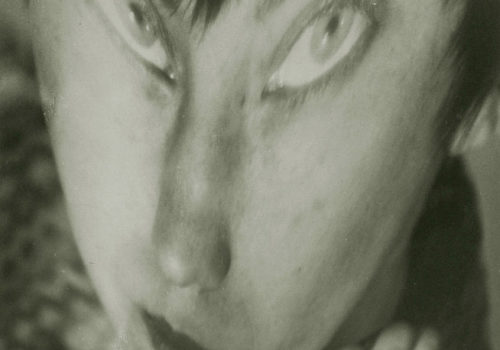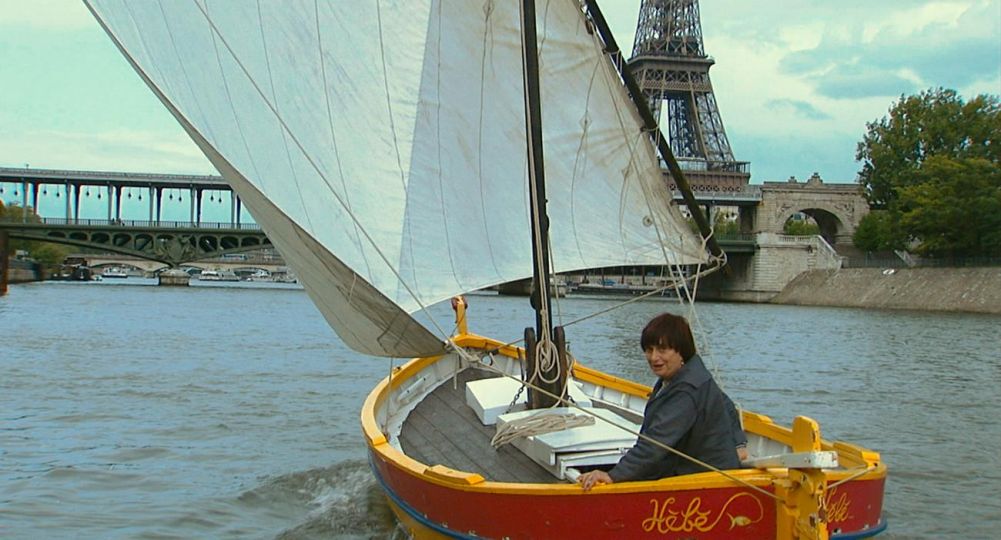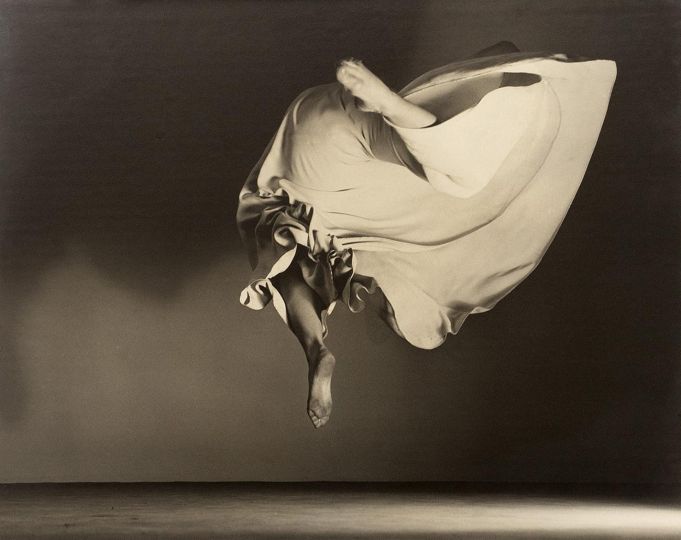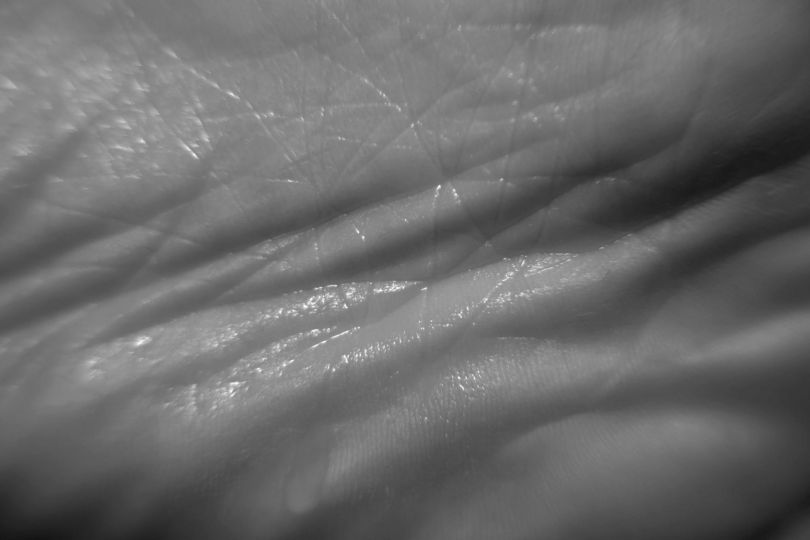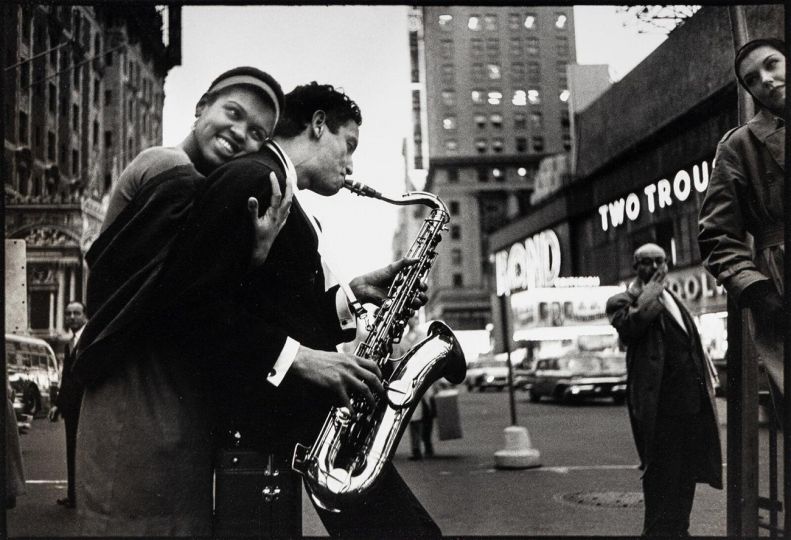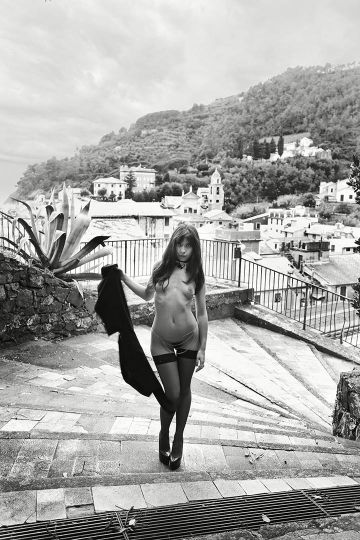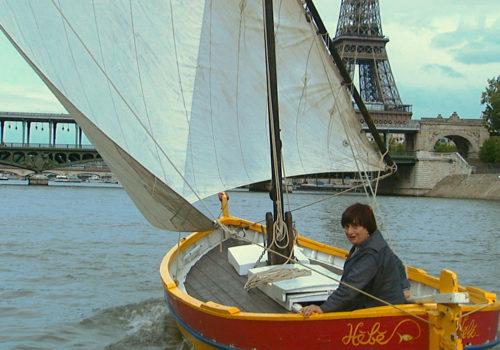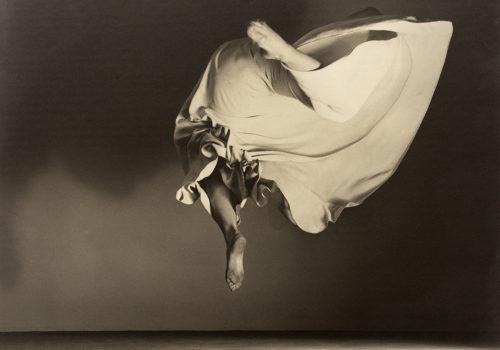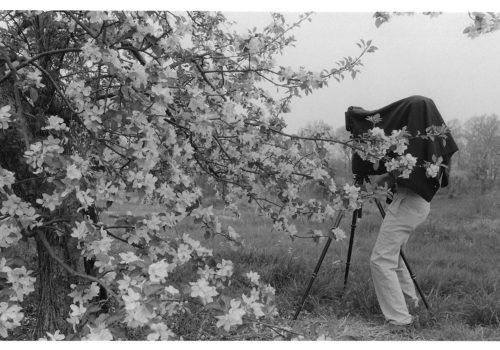James Hyman Fine Art Limited was founded in 1999 and aspires to deal in museum quality fine art of art historical significance in particular by twentieth century British Artists. In 2008 James Hyman decided to develop a programme of photography exhibitions. The rapid expansion of this part of the business, as well as the different clientele for vintage nineteenth and early twentieth century photographs, led to the creation of a new company, James Hyman Photography. In part of the AIPAD Photography Show 2015, the gallery persents us a selection of five photographs included Berenice Abbott, Robert Adams, Bill Brandt, Imogen Cunningham and Alfred Stieglitz.
1. Berenice Abbott
Portrait of the Artist as a Young Woman, c.1945
Vintage Gelatin Silver Print
Dimensions: 22.2 x 18.4 cms (8.72 x 7.23 ins)
Negative date: 1932
Distortion printed: 1945-1950
Signed and stamped verso after 1960
Photographers’ stamp and signed in pencil on verso; signed in pencil on mount recto
This self-portrait distortion is a unique print that is the product of a negative she took in 1932. A keen experimenter in the darkroom, Abbott created a distortion easel in the 1940s, which she later patented in 1948. She made a handful of prints of this self-portrait using the easel, and as it distorted the paper onto which is was printed, no two images are alike.
Born in 1898, Berenice Abbott was a photographer whose career spanned the better part of the twentieth century.
Well-known for her black and white images of New York City, and the urban design that began sprawling through the city in the 1930s, Abbott was also linked closely with the Surrealists, and met Eugene Atget through Man Ray in the mid-1920s.
2. Robert Adams
Santa Ana Wash, Next to Norton Air Force Base, San Bernadino County, California, 1978
Vintage Gelatin Silver Print
Dimensions: 38.3 x 48.5 cms (15.05 x 19.06 ins)
Signed, titled, dated and editioned 2/30 in pencil, with the photographer’s credit stamp. Dated in pencil on the reverse; 1978, printed
1982
His photographs are a kind of testimony: evidence of what has been lost and what remains. But they also ask us fundamental questions about how we live amid the contradictions and compromises of progress. Robert Adams is a humanist and a witness, an artist whose work insists on hope even as it records – and grieves for – a landscape that, in some instances, may soon only exist in his quiet, lucid photographs.
Robert Adams is an American photographer best known for his images of the American West, and the increasing urban impact on what was once the natural frontier. Adams’ work first came to prominence in the 1970s, and was most notably a contributor to New Topographics: Photographs of a Man-Altered Landscape, an exhibition at the George Eastman House in 1975 that is considered to be the most notable exhibiton of American landcape photography of the twentieth century.
3. Bill Brandt
East Sussex Coast, 1978
Vintage Gelatin Silver Print
Dimensions: 23 x 19.7 cms (9.04 x 7.74 ins)
Credit stamp, dated and numbered in an unidentified hand on the verso
4. Imogen Cunningham
Reflections, Sudbury Hill, England 1960, 1960
Vintage Gelatin Silver Print
Dimensions: 24.8 x 32 cms (9.75 x 12.58 ins)
In 1959 Cunningham applied for a Guggenheim Foundation Fellowship. Her proposed project involved working in England. In 1960 The International Museum of Photography, at George Eastman House in Rochester, New York, purchased a major retrospective collection of her work, which allowed her to travel. On March 29th, despite not having been awarded the fellowship, Imogen left for Europe with photographer and friend Edgar Bissantz, returning home on 13th July having been to Berlin, Munich, Paris and London. Whilst in England she is known to have photographed Stonehenge and other historical sites, visiting too, Sudbury Hill where this photograph was taken. Given by Cunningham to eminent British photographer Paul Hill in 1975 on the occasion of an interview subsequently published in Hill and Cooper’s Dialogue with Photography, 1979, Reflections, Sudbury Hill is an intriguing pictorial conundrum. Exhibiting a modernist preoccupation with form, Reflections is a mysterious, a curiously dislocated and partial vision of unexplained forms, as well as a study in the abstract (geometrical) and architectural within a landscape. Cunningham is quoted as having said: “I don’t like landscapes. I never had the time to run out when the weather was right. You know, always I would be getting dinner for somebody, when it was sunset time, when you can do a nice landscape. Or, crack of dawn, I’m not there. So, I’ve very seldom have done anything that could be called a landscape. But I do things in a landscape.” (Imogen Cunningham Trust)
Imogen Cunningham was an American photographer best known for her nude portraits and images of plant life. Throughout her long career, she exhibited professionally from 1914 until her death in 1976- she continued to expand the boundaries of the medium both technically and aesthetically.
5. Alfred Stieglitz (1864-1946) and Clarence White (1871-1925)
Miss Mabel C., 1906
Platinum print
Dimensions: 23.5 x 18.5 cms (9.24 x 7.27 ins)
Mounted Platinum Print
Signed by both artists and dated in pencil, bottom right
Alfred Stieglitz was a pioneering American photographer instrumental over his fifty year career in promoting photography as an accepted art form. With the arrival of fellow Photo-Secession member Clarence White in New York in 1906, Stieglitz initiated a jointly authored series of female studies, including some of the nude. According to the account published in Camera Work in 1909, the collaborative project began ‘in consequence of various lively discussions with some painters about portrait painting and the impossibility for the camera to do certain things.’ The challenge that White and Stieglitz met was ‘to demonstrate the pliability of straight photography as a medium for portraiture or figure work and so disprove the painters’ contentions’; the two also hoped to test some new plates and lenses. Working with two models, Miss Mabel Cramer and Miss Thompson, White and Stieglitz produced a reported ‘sixty negatives’ in the course of two weeks, with surviving prints dated variously from 1906 and 1907. These included a number of evocative portraits of Mabel Cramer, a model and friend of the San Francisco photographer Arnold Gentile, they are dream-like, soft focused and wonderfully still, finding their roots in Symbolist painting. White, it is thought, had more experience with the nude and with female sitters, while Stieglitz undoubtedly had greater technical and darkroom skills. The photographs of this period, of which this photograph, Miss Mabel C, is a prime example, remain some of the most unusual and distinctive of Stieglitz’s career. Miss Mabel Cramer can only be described as a liberated woman, far more progressive than most women of her time. Half French and born in California, Cramer grew up in Marin County. Her family was Roman Catholic and her father was active both in the church and in the Democratic Party. Mabel Cramer was described in the contemporary press as ‘the girl with the Cleopatra face’, with ‘a countenance framed by great masses of raven black hair and lit by large, luminous black eyes’. She was unforgettable, a woman with the ‘symmetry and proportions of figure, which artists have pronounced the feminine ideal’. In 1907 Cramer won third place in a state-wide beauty contest conducted by a San Francisco newspaper. In 1912 after a brief career as a musical comedy chorus girl and an actress, Cramer married a naval officer and ended her wild ways. If White gave Stieglitz the psychological support that he needed to attempt a new sort of portrait series in which a woman moved from her street persona to a choreographed presentation of her naked soul, the opportunity for further experiments did not recur. White went on to shoot nudes with Paul Haviland in 1909 and in May 1912 had an acrimonious split with Stieglitz. Although White demanded the return of the negative and prints they had worked on together, Stieglitz kept fourteen for himself. Platinum prints of this calibre are rarely seen outside institutions. A print of this is in the collection of the Metropolitan Museum of Art.
INFORMATIONS
AIPAD 2015
16 – 19 April, 2015
The Park Avenue Armory
643 Park Avenue
New York, NY 10065
USA
http://www.aipad.com
James Hyman Gallery
Nineteenth and Twentieth-Century Vintage Photographs
16 Savile Row
London W1S 3PL
United Kingdom
http://www.jameshymangallery.com

